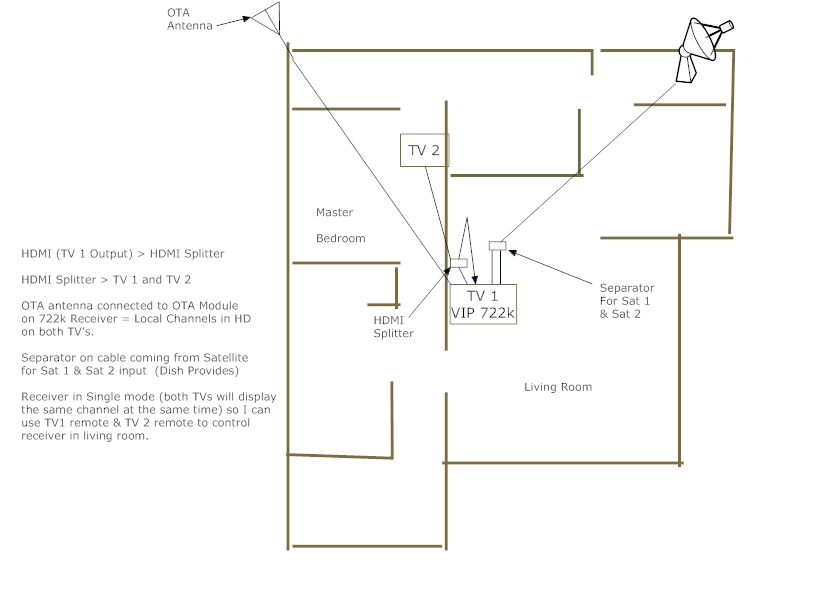What's the diplexer right after the dish? unless you are inputting an OTA antenna you don't need one. Is that supposed to be a switch?
That's what I thought which is the reason I put the diplexer in my diagram (to combine the 2 into 1 cable then separate (with a separator) them before going to the desired receivers.There are, and must be, two wires from the dish, each terminating at a separator near their respective receiver. There is no way to simplify that wiring further
I was answering Whatchel1's question...









